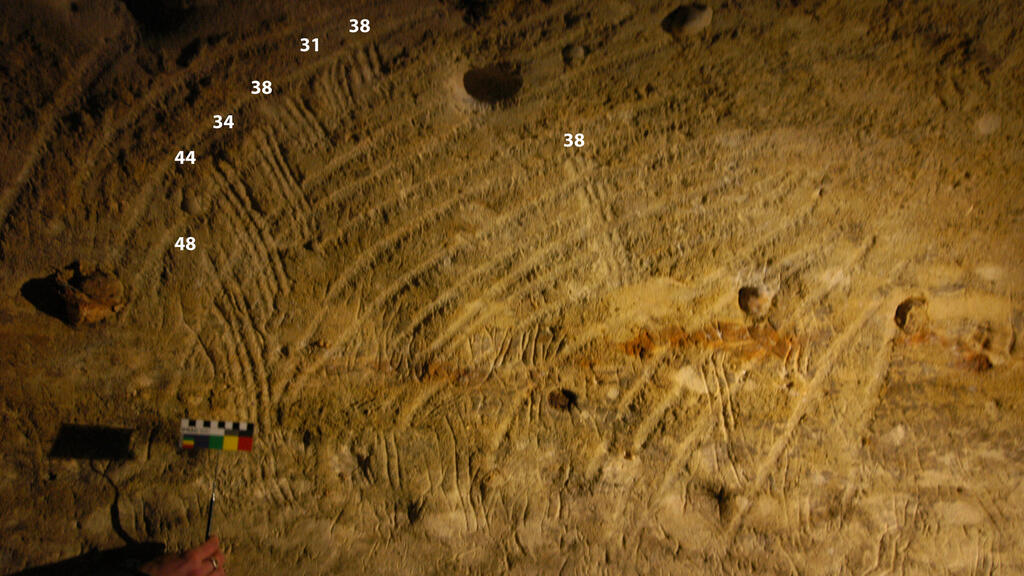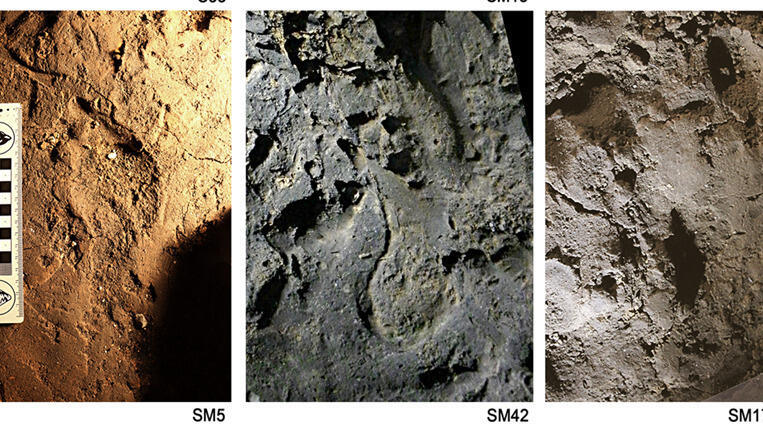Getting your Trinity Audio player ready...
A team of prehistoric archaeology researchers at Tel Aviv University has put forward a new theory to explain why young children were brought into the depths of caves where ancient rock art was created during prehistoric times.
“Near many cave paintings, there's clear evidence of children as young as two being present,” the researchers said. “Most previous theories suggest an educational purpose — teaching tradition and community customs.
“We propose that children played a unique cultural role: they were seen as possessing special spiritual qualities that allowed them to communicate with entities from the beyond, accessible through the cave’s depths.”
The study, conducted by Dr. Ella Asaf, Dr. Yafit Kedar, and Prof. Ran Barkai from Tel Aviv University's Department of Archaeology and Ancient Near Eastern Cultures, was published in Arts, a journal by MDPI.
Dr. Asaf explained that prehistoric cave paintings have long fascinated scholars. “Around 400 caves with such paintings have been found, mainly in France and Spain, dating from approximately 40,000 to 12,000 years ago. Many of these caves contain evidence of children’s participation — handprints and finger drawings made by children aged two to twelve.”
“Some also have children's footprints alongside those of adults,” she added. “This raises the question: Why were children there? Why did they endure dangerous journeys into deep, twisting, oxygen-poor caves, crawling through narrow passages, descending shafts and climbing rocks to reach the artwork?”
Dr. Kedar noted that while extensive research has been done on cave paintings, few studies have focused on children's presence. “The prevailing theory is that they were brought along for educational purposes — to pass down knowledge and traditions.”
Get the Ynetnews app on your smartphone: Google Play: https://bit.ly/4eJ37pE | Apple App Store: https://bit.ly/3ZL7iNv
“Our study suggests an additional role: children actively participated as spiritual mediators, communicating with entities within the caves and beyond. This builds on our previous research, which presented cave art as an expression of cosmological beliefs and human relationships with the natural world,” he explained.
 Dr. Ella AsafPhoto: Courtesy
Dr. Ella AsafPhoto: CourtesyDr. Asaf added that insights from indigenous societies and new findings on cave rituals suggest a deeper understanding of children's roles in creating cave art. “Across history and prehistory, indigenous cultures have viewed children as ‘active agents’ who mediate between this world and spiritual entities — whether in nature, the underworld or the cosmos.
“As hunter-gatherers depended on maintaining harmony with these forces, children played a vital role in their communities, facilitating connections with animals, plants, stones used for tools and ancestral spirits.”
 Prof. Eran BarkaiPhoto: Tel Aviv University
Prof. Eran BarkaiPhoto: Tel Aviv UniversityProf. Barkai explained that many ancient societies saw caves as gateways to the underworld — places where shamanic rituals allowed communication with cosmic entities to address existential concerns.
“Children were often perceived as liminal beings, existing between the world they had just entered at birth and the one they now inhabited. This made them ideal messengers between humans and non-human entities.”
“Our study connects these ideas, suggesting that children joined adults on cave journeys not just as passive observers but as active participants in painting and rituals, fulfilling their role as intermediaries with the spirit world,” he concluded.




